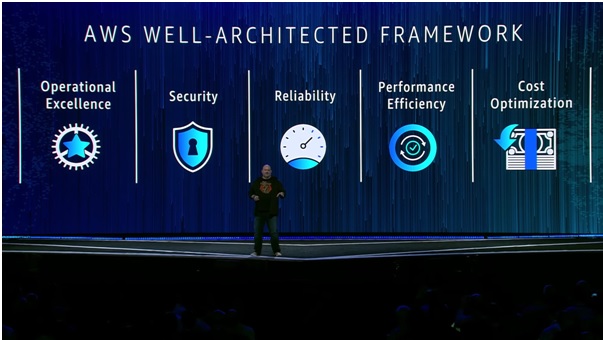How you can benefit from the AWS Well-Architected Framework

Rowan Udell
Cloud Practice Director at Versent, Serverless Champion, AWS APN Cloud Warrior

Rowan Udell
Cloud Practice Director at Versent, Serverless Champion, AWS APN Cloud Warrior
AWS is great at giving you the building blocks for your cloud implementation. In fact, we often use the metaphor of building a house to explain how you can – and should – use AWS to implement and operate your workloads. However, sometimes working with AWS can feel like trying to build a house by walking in to a hardware store; you know all the things you need are in here somewhere but figuring out how they go together is the hard part!
You also need to be confident that the decisions you are making will stand the test of time. Many organisations, especially when they get started in AWS, worry about the on-going performance, cost, and security implications of the decisions their teams are making, as they should. This is why the AWS Well-Architected Framework works so well.
The framework provides a structured way to compare your AWS use against Amazon’s best practices as well as provide guidance to help you improve over time.
Well-Architected at Versent
At Versent we started standardising the Well-Architected Framework late last year as a common approach and language to align our solutions, as well as being consistent with AWS’s recommended approach.
AWS is committed to the Well-Architected Framework as you see below, which was based on the framework’s pillars.

Benefits of Being Well-Architected
Workloads that follow the Well-Architected framework have the ability to:
- Build and deploy faster
- Mitigate technology risks before they happen
- Make better informed decisions
- Implement AWS-recommended best practices
Framework Pillars
The framework is divided up in to
- Operational Excellence
- Security
- Reliability
- Performance Efficiency
- Cost Optimisation
It is interesting to note that in 2017, the pillar was the first covered in the review. This was recently changed so that the first pillar covered is now, because without proper operational processes even the best security standards will be ineffective. In each of the pillars, there are that help elicit the information needed to review your AWS workload; we’ll talk about AWS reviews in a minute.
Design Principles
For each pillar there are design principles that should be considered and address when designing cloud-based implementations. There are both general principles (e.g. “Stop guessing your capacity needs”) that apply to all aspects of usage, and pillar-specific principles (e.g. “Perform operations as code”).
What is a Well-Architected Review?
Once you’ve started using the framework for a while, we recommend you conduct Well-Architected Reviews encourage a consistent and structured approach. This in turn helps the cycles of the process be formalised so that they can be reviewed regularly ensuring the best return on investment for your efforts.
This will also give you a document of findings that can be used to make improvements to your AWS service.
Originally, only AWS Solution Architects could run Well-Architected Reviews. Recently AWS opened this up to a select group of partners so that they can perform reviews.
How do you start a Well-Architected review?
The review is driven by asking questions about your AWS service.
Both functional and non-functional topics are explored, with the desire to qualify the current state of the workload’s architecture and implementation. The answers to these questions are recorded and form the output of the Well-Architected Review.
Don’t worry, it’s not an audit
It is a point-in-time evaluation. You can’t fail it. The results are not a
scorecard, they are a measurement.
The framework can, has, and will change over time, and so is not intended as a finishing point either. Rather, it is a form of feedback and measurement on your cloud journey.
Want Your Own Well-Architected Review?
As an AWS Well-Architected Partner, Versent is able to perform Well-Architect Reviews of your AWS-based systems and applications.
Get in touch (info@versent.com.au) to arrange a review, or just to have a chat about how we can help with your Amazon application.
Rowan is the Cloud Practice Director at Versent, a Serverless Champion, AWS APN Cloud Warrior, and published author on AWS. When he’s not using and talking about AWS at work, meetups, or online, he’s busy running after his three kids.